
Mormonism is the predominant religious tradition of the Latter Day Saint movement of Restorationist Christianity started by Joseph Smith in Western New York in the 1820s and 30s.

The Latter Day Saint movement is the collection of independent church groups that trace their origins to a Christian Restorationist movement founded by Joseph Smith in the late 1820s.

Abraham Owen Woodruff was a member of the Quorum of the Twelve Apostles of The Church of Jesus Christ of Latter-day Saints. He was also the son of LDS Church president Wilford Woodruff. He was ordained an apostle at the relatively young age of 24, but served less than seven years until his death.
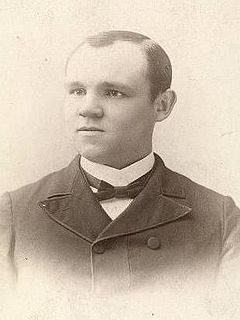
James Edward Talmage was an English chemist, geologist, and religious leader who served as a member of the Quorum of the Twelve Apostles of The Church of Jesus Christ of Latter-day Saints from 1911 until his death.
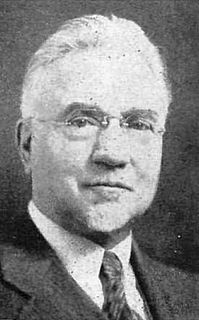
John Andreas Widtsoe was a member of the Quorum of the Twelve Apostles of The Church of Jesus Christ of Latter-day Saints from 1921 until his death. Widtsoe was also a noted author, scientist, and academic.

Mormon cinema usually refers to films with themes relevant to members of The Church of Jesus Christ of Latter-day Saints. The terminology has also been used to refer to films that do not necessarily reflect Mormon themes but have been made by Mormon filmmakers.

Charles Coulson Rich was an early leader in the Latter Day Saint movement. He led one of the first groups of Mormon pioneers west from Illinois under the leadership of Brigham Young after Joseph Smith's murder.

The Pearl of Great Price is part of the canonical standard works of The Church of Jesus Christ of Latter-day Saints and some other Latter Day Saint denominations.
The God Makers is a book and film highlighting the inner workings and perceived negative aspects of The Church of Jesus Christ of Latter-day Saints. Ed Decker and Dave Hunt co-authored the book and film.

Nicholas Groesbeck Smith was a general authority of The Church of Jesus Christ of Latter-day Saints. Born in Salt Lake City, Utah Territory, Smith was the son of LDS Church apostle John Henry Smith and Josephine Groesbeck. At age three, he went to England with his parents, where his father was serving as a church mission president.
Prophet, seer, and revelator is an ecclesiastical title used in the Latter Day Saint movement. The Church of Jesus Christ of Latter-day Saints is the largest denomination of the movement, and it currently applies the terms to the members of the First Presidency and the Quorum of the Twelve Apostles. In the past, it has also been applied to the Presiding Patriarch of the church and the Assistant President of the Church. Other sects and denominations of the movement also use these terms.
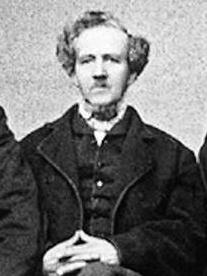
Phineas Howe Young was a prominent early convert in the Latter Day Saint movement and was later a Mormon pioneer and a missionary for The Church of Jesus Christ of Latter-day Saints. Phineas Young was an older brother of Brigham Young, who was the president of the LDS Church and the first governor of the Territory of Utah.
The Church of Jesus Christ of Latter-day Saints takes no official position on whether or not biological evolution has occurred, nor on the validity of the modern evolutionary synthesis as a scientific theory. In the 20th century, the First Presidency of the LDS Church published doctrinal statements on the origin of man and creation. In addition, individual leaders of the church have expressed a variety of personal opinions on evolution, many of which have affected the beliefs and perceptions of Latter-day Saints.

Preston Nibley was an American religious leader in The Church of Jesus Christ of Latter-day Saints, and wrote several books on the church, including several pieces of devotional literature.
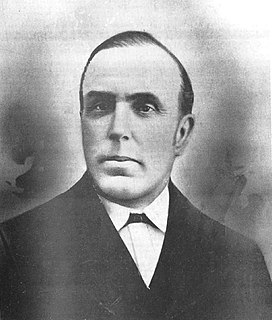
William Reed Smith was a Utah territorial politician and a leader of The Church of Jesus Christ of Latter-day Saints in Utah
As of 31 December 2019, The Church of Jesus Christ of Latter-day Saints reported 188,187 members in 45 stakes, 320 congregations, five missions, and two temples in the United Kingdom.
Latter-day Saint Biographical Encyclopedia: A Compilation of Biographical Sketches of Prominent Men and Women in the Church of Jesus Christ of Latter-day Saints is a four-volume biographical dictionary by Andrew Jenson that includes a church chronology and biographical information about leaders and other prominent members of The Church of Jesus Christ of Latter-day Saints from its founding in 1830 until 1930.
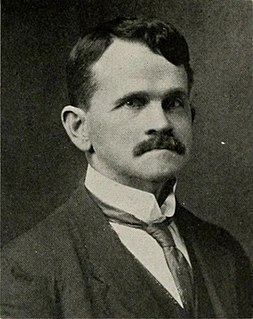
William Henry Chamberlin Jr. was an American Mormon philosopher, theologian, and educator. His teachings and writings worked to reconcile Mormonism with the theory of evolution. He taught philosophy and ancient languages as well as science and math at several Latter-day Saints (LDS) institutions including Brigham Young University in the early 20th century. He was one of four educators at Brigham Young University whose teaching of evolution and attempts to reconcile it with Mormon thought, although strongly popular with students, generated controversy among university officials and the LDS community. Chamberlin has been called "Mormonism's first professionally trained philosopher and theologian."











